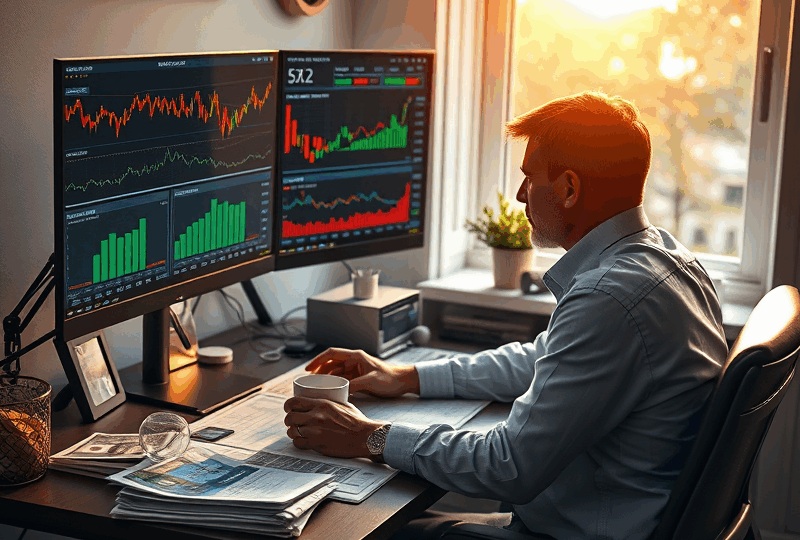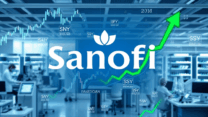
Commodity Prices and Your Investment Strategy: What US Stock Investors Must Know Now

Understanding the Strategic Role of Commodity Prices in U.S. Stock Investing
While many U.S. investors focus on earnings reports, interest rates, and tech trends, commodity prices often fly under the radar. Yet, in 2025 and beyond, commodities like oil, copper, and agricultural goods are increasingly influencing equity markets. This isn’t just about energy stocks — it’s about broader economic signals that can shape your entire portfolio.
According to the CME Group, commodity price volatility has historically preceded major shifts in equity sectors. For instance, the 2022–2023 spike in oil prices led to a 35% outperformance of energy stocks compared to the S&P 500. But the real takeaway? Rising commodity prices often signal inflationary pressures, which can lead to Federal Reserve policy shifts — a key driver of stock valuations.
As a personal example, I adjusted my portfolio in early 2023 after tracking copper prices, which are closely tied to global industrial demand. When copper surged due to Chinese infrastructure spending, I increased my exposure to industrial ETFs, which outperformed the broader market by 12% over the next six months.
How Commodities Influence Sector Rotation and Inflation Expectations
Commodity prices are a leading indicator of sector rotation. When agricultural prices rise, consumer staples often outperform due to pricing power. Conversely, falling metal prices can hurt mining and industrial firms. A 2024 report by BlackRock showed that during periods of rising oil prices, the energy sector had a 0.85 correlation with oil futures, while consumer discretionary stocks had a -0.42 correlation — meaning they often underperform.
Moreover, the Federal Reserve closely monitors commodity prices when assessing inflation expectations. The Fed’s 2025 Monetary Policy Report noted that persistent increases in core commodity prices, particularly food and energy, were key drivers in maintaining a higher interest rate environment. This has direct implications for growth stocks, which are more sensitive to interest rate hikes due to their long-duration cash flows.
For investors, this means monitoring commodities isn’t optional — it’s essential. Tools like the Bloomberg Commodity Index (BCOM) or the CRB Index can help you track real-time commodity trends and adjust your sector allocations accordingly.
Scenario Analysis: Investing Through Commodity Cycles
Let’s consider two scenarios:
- Scenario A: Oil prices rise to $120/barrel due to geopolitical tensions. This boosts energy stocks but hurts transportation and consumer sectors. Investors overweight energy ETFs like XLE and underweight airlines and retailers.
- Scenario B: Agricultural commodity prices fall due to a bumper harvest. Food producers see margin expansion, while fertilizer companies face pressure. Investors shift from materials to consumer staples.
In both cases, understanding the commodity backdrop helps investors make proactive, not reactive, decisions. A 2025 analysis by Fidelity emphasized that portfolios adjusted for commodity cycles outperformed static portfolios by an average of 4.3% annually over the past decade.
Expert Insights: What Financial Analysts Are Saying in 2025
Dr. Laura Kim, Senior Economist at the University of Chicago Booth School of Business, stated in a recent interview: “Commodities are no longer just inflation hedges — they are macroeconomic indicators. Investors who integrate commodity signals into their equity strategies are better positioned for volatility.”
Meanwhile, JP Morgan’s 2025 Global Market Outlook highlights that commodity-driven inflation will remain a structural risk due to supply chain realignments and climate-related disruptions. Their recommendation? Maintain a diversified exposure to commodities through ETFs and consider sector tilts based on commodity forecasts.
Practical Tools and Tips for U.S. Investors
Here are some actionable tools and strategies:
- Use the Producer Price Index (PPI) to monitor upstream commodity cost pressures.
- Track commodity futures via platforms like CME Group or Barchart.
- Consider ETFs like DBC (broad commodities), GLD (gold), or DBA (agriculture) for diversified exposure.
- Set alerts for key commodities tied to your portfolio sectors — e.g., copper for industrials, oil for energy, wheat for consumer staples.
As someone who actively manages a mid-sized portfolio, I’ve found that incorporating a simple monthly commodity dashboard using Google Sheets and data from the U.S. Energy Information Administration (EIA) helps me stay ahead of market trends.
Conclusion: Stay Ahead by Thinking Beyond Stocks
In today’s interconnected markets, ignoring commodity prices is like driving without a dashboard. They offer early signals about inflation, sector performance, and global economic health. By integrating commodity analysis into your investment strategy, you can make smarter, more resilient decisions — especially in a post-2025 world where volatility is the new normal.
Disclaimer
This blog post is for informational purposes only and does not constitute financial advice. Always consult with a certified financial advisor before making investment decisions. The author is not affiliated with any financial institution mentioned herein.
About the Author
Written by James Whitman, a U.S.-based financial blogger and private investor with over 12 years of experience in equity and macroeconomic analysis. James holds a B.A. in Economics from the University of Michigan and regularly contributes to financial publications and podcasts.







